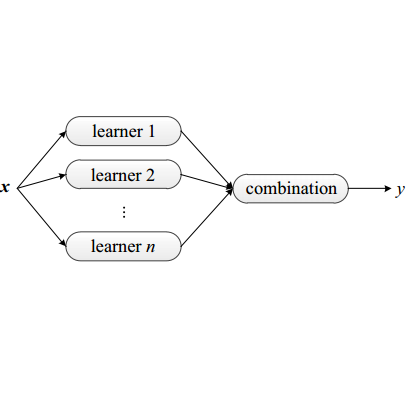Random Ferns -- as a less known example of Ensemble Learning -- have been successfully applied in many Computer Vision applications ranging from keypoint matching to object detection. This paper extends the Random Fern framework to the semantic segmentation of polarimetric synthetic aperture radar images. By using internal projections that are defined over the space of Hermitian matrices, the proposed classifier can be directly applied to the polarimetric covariance matrices without the need to explicitly compute predefined image features. Furthermore, two distinct optimization strategies are proposed: The first based on pre-selection and grouping of internal binary features before the creation of the classifier; and the second based on iteratively improving the properties of a given Random Fern. Both strategies are able to boost the performance by filtering features that are either redundant or have a low information content and by grouping correlated features to best fulfill the independence assumptions made by the Random Fern classifier. Experiments show that results can be achieved that are similar to a more complex Random Forest model and competitive to a deep learning baseline.
翻译:Randern Ferns -- -- 编织学习的一个不太为人所知的例子 -- -- 成功地应用于许多计算机视野应用,从关键点匹配到对象探测等多种应用。本文将随机Fern框架延伸至对数合成孔径雷达图像的语义分割。通过使用在Hermitian 矩阵空间上定义的内部预测,拟议的分类器可以直接应用于对数共变矩阵,而不必明确计算预定义图像特征。此外,还提出了两个不同的优化战略:第一个基于在创建分类器之前预选和组合内部二元特征;第二个基于迭接改进给定随机Fern的特性。两种战略都能够通过筛选功能提高性能,这些功能要么是多余的,要么是信息含量低的,也可以通过组合相关特征来最好地满足随机Ferncelliger所作的独立假设。实验显示,可以实现的结果类似于更复杂的随机森林模型,并且具有与深层次学习基线的竞争力。



